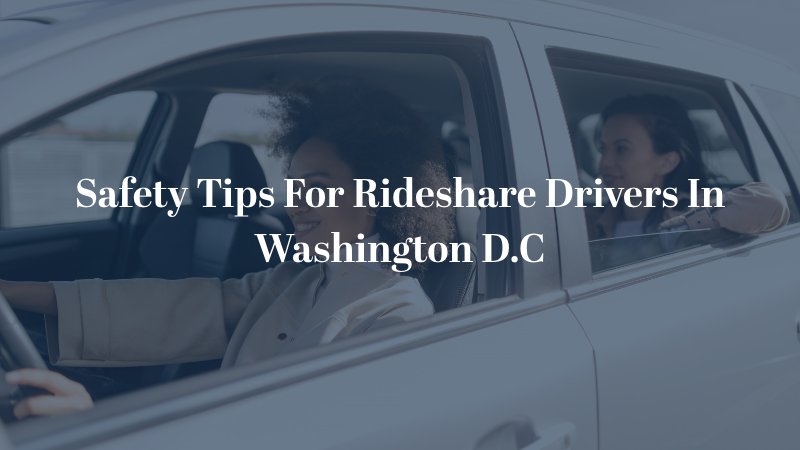Accidents involving Uber and Lyft services can happen, largely due to avoidable situations like speeding or rider misconduct, according to our Rideshare accident attorney in Washington D.C. Being aware of these common causes will go a long way towards preventing them and enhancing safety during your trips. Some of the most common causes of accidents include the following:
Distracted Driving: In the rideshare business, Uber and Lyft drivers heavily rely on their mobile apps for navigation and communicating with passengers. Unfortunately, this necessary activity can divert their attention off the road leading to accidents.
Fatigued Driving: As a means to maximize earnings, rideshare drivers often put in long hours; this unfortunately includes late-night shifts when demand surges. These prime times are also when fatigue sets in, compromising driver alertness levels and increasing the likelihood of accidents.
Speeding: As a Lyft or Uber rider, it’s critical to understand that your driver can be negligent. One common cause of accidents is speeding. Despite the fact that drivers are subject to time pressures, this doesn’t excuse reckless driving habits like exceeding speed limits.
Rider Misconduct: Drivers aren’t always at fault when rideshare accidents occur – passengers also bear some responsibility in certain scenarios. This could involve causing distractions while the vehicle is in motion or otherwise interfering with safe driving on the part of the driver.
Preventing Uber and Lyft Accidents
By following the below suggestions, you can help ensure that your rideshare experience is safe and enjoyable, rather than fraught with unnecessary risks.
Safety Tips for Passengers
As a passenger utilizing ridesharing services, there are several steps you can take to improve your safety and minimize the risk of accidents:
- Evaluate Your Driver: After booking a ride, it is beneficial to check the driver’s ratings and reviews from previous passengers. If you don’t feel safe with this person’s driving, don’t be afraid to cancel the trip.
- Verify Vehicle and Driver: Ensure the license plate number and make and model of the car match the information provided on the app. Before getting in, also verify the driver’s identity to confirm that they’re the one assigned to your ride.
- Buckle up: It may seem like an obvious tip, but always wearing a seatbelt is a golden rule when you are in any moving vehicle. Ensuring your seat belt is securely fastened before the car moves can dramatically reduce your risk of serious injury if an accident occurs.
- Voice Your Concerns: Finally, don’t be afraid to voice any concerns about the driver’s conduct behind the wheel. If they’re driving recklessly or faster than you’re comfortable with, kindly ask them to slow down or drive more carefully.

Safety Tips for Rideshare Drivers
If you’re a rideshare driver, there’s a heightened responsibility to prioritize the safety of both yourself and your passengers. Here are some essential guidelines to follow:
- Drive Defensively: Engaging in defensive driving holds immense benefits not just for Uber and Lyft drivers but all road users. This practice helps you make safer decisions while on the move, preparing for unexpected events or dangerous situations caused by others’ mistakes.
- Minimize Distractions: As an Uber or Lyft driver, it’s important to foster a conducive environment that allows full concentration on the road. Avoid unnecessary actions such as constantly changing radio channels, eating meals while driving, or checking your phone regularly other than for navigation purposes.
- Follow Traffic Rules: Rigorously follow all traffic laws and regulations including speed limits and traffic signals, using turn signals appropriately, and observing right-of-way rules. While this might seem like basic advice, it’s worth emphasizing considering how many accidents result from the above issues.
- Take Breaks: While it may be tempting to push through fatigue to complete more rides within your shift, remember that tiredness significantly impacts reaction times and concentration levels negatively. That’s why taking regular breaks is essential as a driver to help combat fatigue before it becomes detrimental.
By employing these strategies, both passengers and drivers can enjoy safer Uber and Lyft rides. If you have been in an Uber or Lyft accident recently, contact Lightfoot Law, PLLC today.